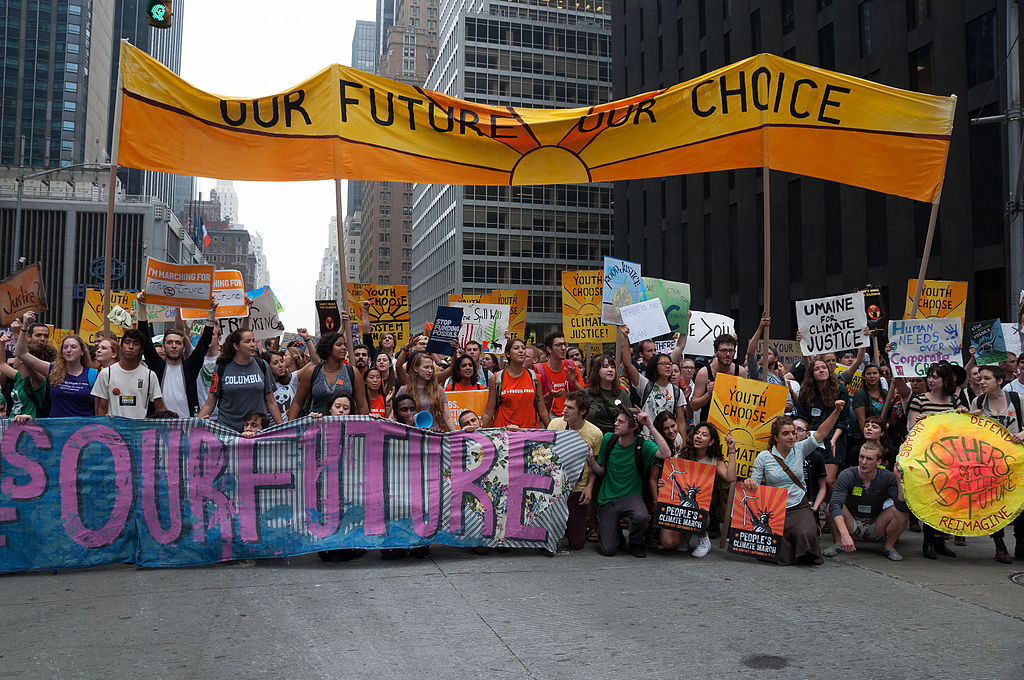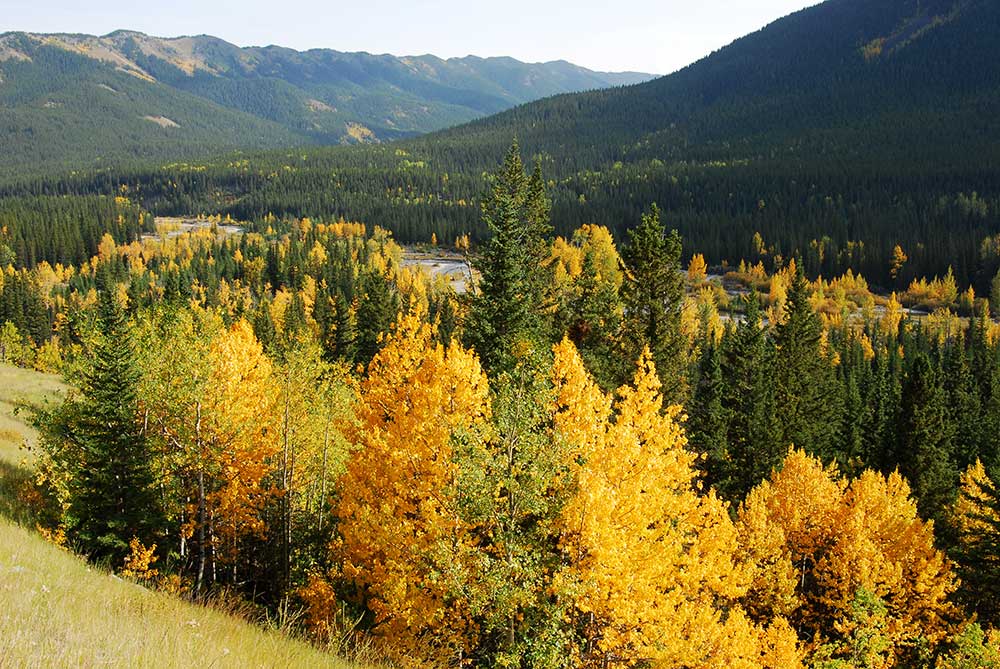The environment is facing tough times in a Trump presidency. Within an hour of his inaguration, all mentions of climate change were removed from the White House website. Since then, key environmental regulations have been slashed, and a bill has been introduced calling for the abolishment of the EPA. So what's an environmentalist to do? Below, Island Press authors share their advice for agitating for action on climate change and continuing to push an environmental agenda forward in the face of an unsupportive administration.
Don't freak out. OK, maybe freaking out is in order. But do it judiciously. There are many gaps between administration pronouncements and actual policy. Do not react to every executive order, press release, or tweet. Find the connections between administration statements and real policies. For whatever issue you care about, there's a group - environmental, immigrants rights, etc. - that's been working on it for years. Find them, look to them for guidance, volunteer or give them money. Get involved.
-John Fleck, Water is for Fighting Over...and Other Myths about Water in the West
The threats facing big cats and their landscapes remain unchanged in light of the recent U.S. presidential election, but the urgency with which we need to protect them remains. There are many meaningful ways to take action on this front, whether it’s by supporting nonprofits like Panthera or purchasing goods from companies committed to using resources sustainably. Everyone should follow organizations whose missions speak to them and whose actions are in sync with their words. Share their work and start conversations about why and how animals and their landscapes are so important to the health of our planet and ultimately ourselves as well.
-Alan Rabinowitz, An Indomitable Beast and CEO of Panthera, the global wild cat conservation organization

In my book, I describe how food waste contributes dramatically to climate change, noting that food waste is the world’s third-leading contributor of atmospheric greenhouse gases, which trails only two whole countries—China and the United States—in that category. I also describe how government regulations promote food waste and, hence, climate change. The USDA's National School Lunch Program and food-grading standards both promote massive amounts of food waste, and should be overhauled and/or eliminated. Even if our unhinged president does nothing about either of these issues, regular people can vote with their forks by, for example, purchasing ungraded produce at farmers markets and packing a school lunch for their child (and a second lunch for a student in need).
-Baylen Linnekin, Biting the Hands that Feed Us
One would think the great coniferous forests of the Northwest could withstand just about anything nature had to throw at them. In truth, however, these forests have been drastically changed by human activities. Increasingly unusual temperature and rainfall patterns are ratcheting up the threat level. A person would surely be excused for thinking that a one degree Celsius rise in average temperature would have no effect on these magnificent trees and the animals they harbor, but consider that such a small temperature increase would raise the lower edge of the snowpack by about 500 feet. That’s a lot of water no longer contributing to spring and summer runoff when plants and animals are most thirsty. Such a temperature increase would also cause the vegetation to transpire a lot more water, drying out the soils and shrinking the creeks and waterways. Forests that have dried out too much are more susceptible to widespread pest and disease infestations as well as to fire.
All is not lost, however; there are ways to deal with climate effects. Probably the most straightforward of these is to maintain a diverse forest with a variety of tree species, tree ages, and vegetation layers. Openings in the forest canopy can help to support a healthy shrub layer. Vegetation around streams helps to cool them so they can support cold-water fish, such as salmon. Forest restoration efforts following fires or other disturbances can help. Planting diverse native species and perhaps using seed or stock from an area where temperatures are more similar to those predicted over next several decades can help these forests to be resilient to climate change and other disturbances that come with changing climate. Replacing small culverts with larger ones that are carefully set can accommodate spring floods while helping fish to navigate upstream when water flows are reduced.
People concerned about the future of these forests can get involved in local forest planning. Speaking up for the forests, and providing a voice for their future and that of the communities that rely on them, is a great way to roll up your sleeves and make a difference.
-Bea Van Horne, People, Forests, and Change
1.) Get involved locally. There are environment, climate change issues that are impacting your community. Get involved on the local, grassroots level.
2.) Don’t get discouraged. Get informed, know the facts (and yes, there is such a thing as factual information) and don’t lose your resolve.
-Alan Kolok, Modern Poisons

There are ample opportunities for everyone to get involved with local planning to address climate change. Tools you can use to make your communities or natural areas more resilient and resistant to climate change include: 1) retaining and restoring moist areas – such as by keeping downed wood and ephemeral wetlands, installing riparian buffer zones, and paying attention to shading including hill-shading which naturally increases moisture potential; and 2) a mixed approach to natural-area management can increase both habitat heterogeneity at larger spatial scales and consequently species diversity, and then think about linking those habitats together across larger areas with corridors to reduce fragmentation.
-Dede Olson, People, Forests and Change
As the federal government proceeds to put its head further into the sand on climate change, the action will increasingly shift to local policy. Cities can’t solve the problem through regulation—their jurisdictions are too limited. But they can help through purchasing policies, utility pricing and transportation planning. Think globally/act locally suddenly takes on more significance than ever.
-Grady Gammage, The Future of the Suburban City
You can’t stop human-caused climate change on your own, but you can slow it down a bit. And you can do it with a president in the White House who’s working to uncork new gushers of heat-trapping carbon dioxide.
Slowing climate change begins with personal behavior, since all human beings contribute heat-trapping gases to the atmosphere. For those thinking about having children, it’s worth pondering that managing greenhouse gas emissions will be a challenge for as long as we’re on the planet. That’s a good argument for having a small family—or foregoing childbearing if ambivalent about becoming a parent. A smaller world population will have an easier time keeping emissions low and adapting to the massive changes on the way. In our own lives, without withdrawing from the world, we can walk our talk in eschewing emissions-intensive actions that are inefficient, frivolous, or do little or nothing for anyone’s joy or quality of life.
Without major policy change, behavior change falls way short of game change, and it’s game changing that the world desperately needs. For that, nothing short of expressing our views as often as we can manage—in letters to legislators and newspapers, in petition signatures, in responses to pollsters, in marching in protests, even in organizing communities—is likely to make enough difference to notice. A rising tax on carbon is essential, and while we can differ on the details of how to do that (ideally returning most or all revenue generated to citizens), nothing we attempt will turn the corner on climate change until the price of fossil fuels rises.
We can think about connections, too—climate change relates to the food we eat, the appliances we use, the electricity and water we pay for. Policies that are local and statewide as well as national can make a difference with these.
Finally, we can support women’s reproductive rights—the theme of the marches that went global on the second day of Trump’s presidency. Unintended pregnancy undermines women’s capacity to contribute productively to society, including to slowing climate change, and it takes us further from a future of sustainable human populations more likely to manage emissions and climate change safely.
-Robert Engelman, More: Population, Nature, and What Women Want

What can we do to ensure that sound science continues to inform how we address climate change? We can urge the president to hire a national science advisor and other scientists with appropriate credentials in ecology and engineering to fill key posts in his administration. As members of a democratic society, we can support freedom of scientific inquiry and diversity in science. Specifically, we can comment publicly on proposed policies that affect the environment and vote accordingly. On a personal level, we can get directly involved in supporting science that informs climate policy by participating in science via citizen science. A variety of organizations enable public participation in science such as Earthwatch Institute. Whatever our approach, putting science into action represents our best hope to address climate change.
-Cristina Eisenberg, The Carnivore Way
1) Do that which only you can do and at least some of what everyone must do.
2) Don’t compete: Discern ways that your actions complement others’ actions toward the goods of health and justice.
3) Resist tyranny. Speak out, especially when someone tells you not to.
4) Have each others’ backs.
5) Recognize that not all hopes are equally worthy, and that skillful love requires intimate knowledge.
-Julianne Warren, Aldo Leopold's Odyssey, Tenth Anniversary Edition


